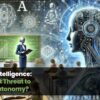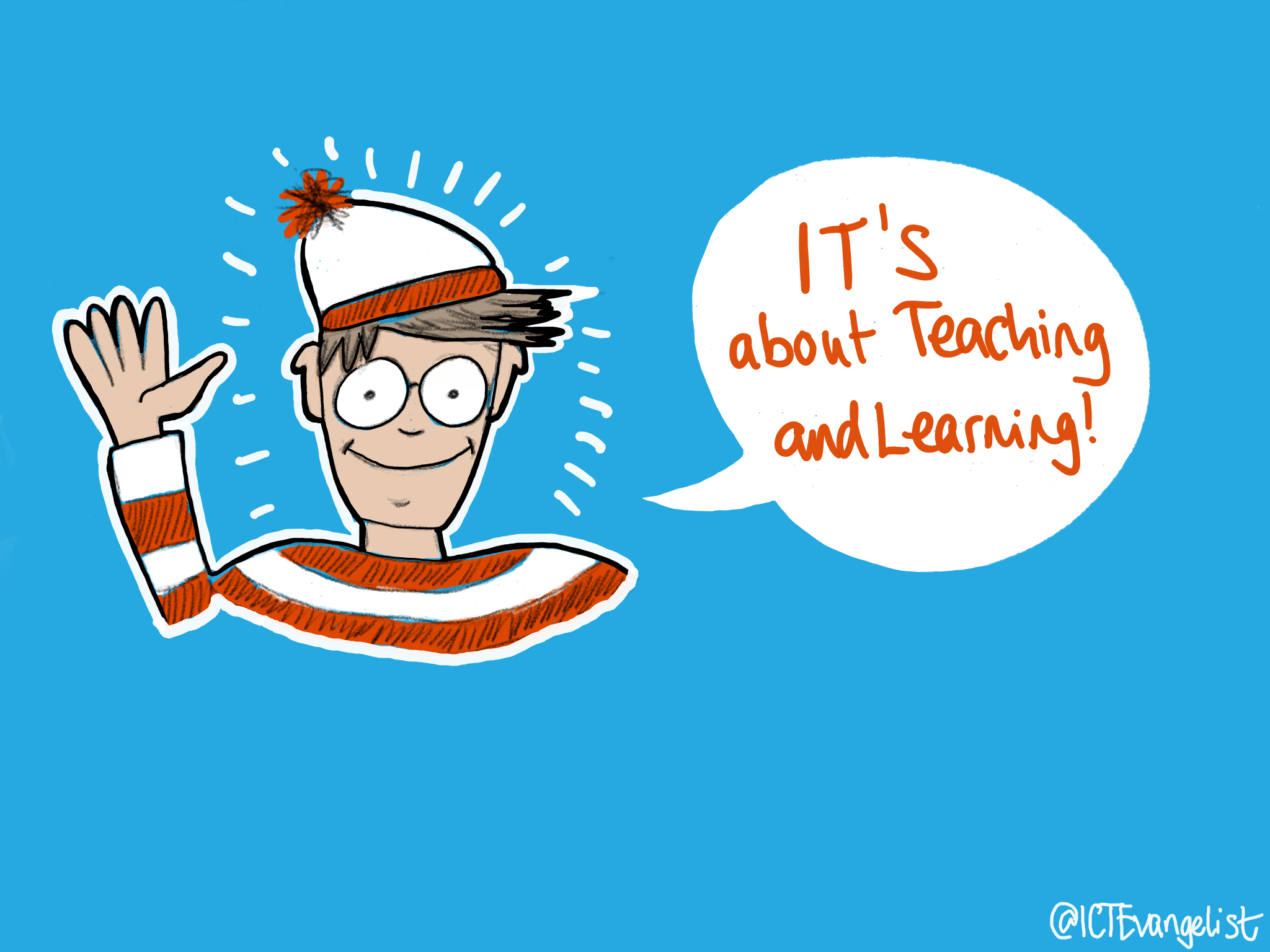
Earlier today I was paid a compliment by Amjad Ali who runs the ‘trythisteaching‘ website. He said to both Abdul Chohan and I that he would love the opportunity to work with us both:
In the tech arena, @ICTEvangelist and @Abdulchohan 🙂 https://t.co/qPsK0Uxn2O
— Amjad Ali (@ASTsupportAAli) May 2, 2017
Whilst it’s always nice to receive a compliment like this, one thing was particularly stark in his comment – he’d quoted a tweet saying that he’d like to work with some people known for their ideas and impact around teaching and learning but then separated this to say that on a technology front he’d like to work with Abdul and I.
If there’s one thing I have learned through the years is that teaching and learning with technology is a very different thing to teaching in the Computing or IT/ICT classroom. They are not the same. For sure, they have similarities because when looking at both it is clear that at some point in time both will involve the use of technology.
When it comes to technology use in the classroom it is about teaching and learning. Technology in the classroom should serve to support our teaching and their learning. Not the other way around and certainly it shouldn’t be put in front of teaching and learning. As both Abdul and I pointed out to Amjad, it’s not a technology thing, it’s a teaching and learning (and leadership although that aspect has been and will be again covered in other posts).
One model which helps us with thinking about teaching and learning with technology is that of TPACK. I’ve mentioned it many times before but for the avoidance of doubt; TPACK is the technological, pedagogical and content knowledge model. It is derived from the original model of PCK created by Shulman in 1987:
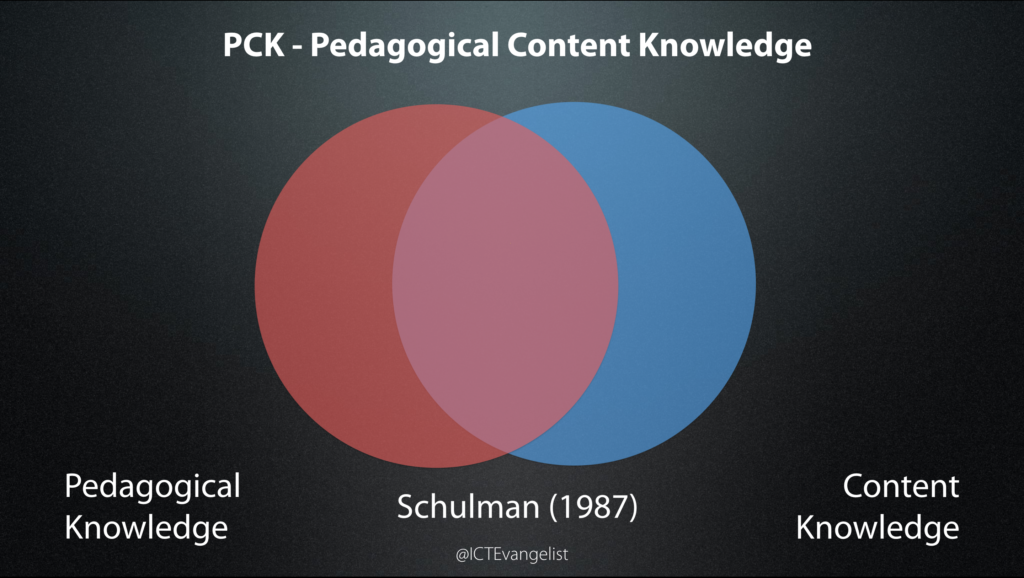
The Pedagogical Content Knowledge Model
In short, the PCK model suggests that good teaching and learning takes place when a teacher marries their pedagogical knowledge with their content knowledge. That knowledge they have experience of from their professional learning and from their professional experience. As we know, children do not learn the same way on the same day but there are techniques we can apply to our teaching to support the learning of pupils.
Later on, Koehler & Mishra (2009) recognised that a more modern and critical pedagogy required that we include our knowledge of the use of technology to the mix and how it can support our teaching and pupil learning to further develop both within the classroom. Thus, TPACK was formed which looked closely at the marriage between pedagogical knowledge, content knowledge and our technological knowledge. What is important to recognise in their model is the equal weighting given to the knowledge of each area.

The Technological, Pedagogical and Content Knowledge Model
Something I share regularly in my training and support of schools is that teachers need lots of professional development in order to develop their technological knowledge. This isn’t to make it so that teachers use more technology. Not at all. This is so that just like a teacher can decide how much and at what correct level content knowledge might need to be put at for an individual or group or what type of pedagogical techniques might support the learning of that content, it is equally true for technology.
Modern ways of thinking around teaching and learning should look closely at how much, at what level and what type of each three areas can help to bring about a successful teaching and learning sequence. Sometimes that might include lots of technology. Sometimes it might include lots of content. Sometimes it might have a multi-pronged pedagogical approach with lots of differentiated materials. Sometimes it might not include any technology at all. Being a strong practitioner in these modern times should require educators to be mindful of all three of these areas in equal measure. There are lots of quotes about how pedagogy should come first and that pedagogy is the driver and technology is the accelerator. These are great and thanks to Michael Fullan for these but without secure knowledge of each of these three areas you are unlikely to be successful in a modern pedagogical approach.
Many educators believe that in order to be successful in the classroom you only need PCK and that technology has no place. This could be seen to be true if you don’t want to leverage the impact technology can provide in your classroom. Technology can serve learning in so many ways. Even if we take it at its most basic level, when was the last time you had to take a paper register? I suspect it was on the field or other fire assembly point during a fire drill. How successful was that? Was it a quick process? Was it simple? And how was that paper register even generated? To ignore technology and how it can help us in our job, let alone to support and enhance teaching and learning is to ignore something that can help us hugely. Let’s take another simple example to explore this further in relation to our teaching and pupil learning…
For example…
Let’s say you are conducting a simple experiment to help learning around reaction times. The learning will be held in the analysis of the results of the experiment. To test the hypothesis around reaction times pupils are going to record reaction times to them catching a ruler that has been dropped. Now you could as part of the preparation for the experiment ask pupils to create a table to record times in their books. You could additionally provide pupils with a worksheet to record these times on. You could alternatively create a Google Form for pupils to record their names and times on. Which of these three serve the learning process better?
Well of course it is important that pupils are able to draw a table and record times. It is also important that pupils are able to interrogate the data, add it all up, calculate an average, so forth and so on. These skills however do not need to be taught or necessarily practiced every single time an experiment is to take place. Remember, the learning in this instance comes in the analysis. Why wouldn’t we want to use technology to perform these calculations and records for us? Is it not better to save time, have all pupils feed their results into one central place and for analysis to happen on a larger scale to explore the hypothesis and to allow for the interrogation of that data? Of course it is. And what about those pupils in your class who may suffer from some additional learning needs who could actually spend the whole lesson drawing the table, let alone recording results and analysing them on an individual level? Why would we want pupils to focus on the secretarial aspect of the activity – surely we want them to spend time interrogating the results to check to see if the hypothesis is correct.
Technology can obviously help here and it can help in many other scenarios too. There are educators who see technology as a distraction and detract from learning. The fact is that actually, when you think critically about pedagogy, content and technology as a whole whilst starting with the learning and looking at how technology can improve what happens in the classroom, you are going to see an impact with what technology can do. I’m not talking about a huge silver bullet that will make the results of all of your children sky rocket; what we can do though in these time-poor times, where we have so much content to cover in our curricula, technology can make a cumulatively large difference when you add up all the things technology can do to help.
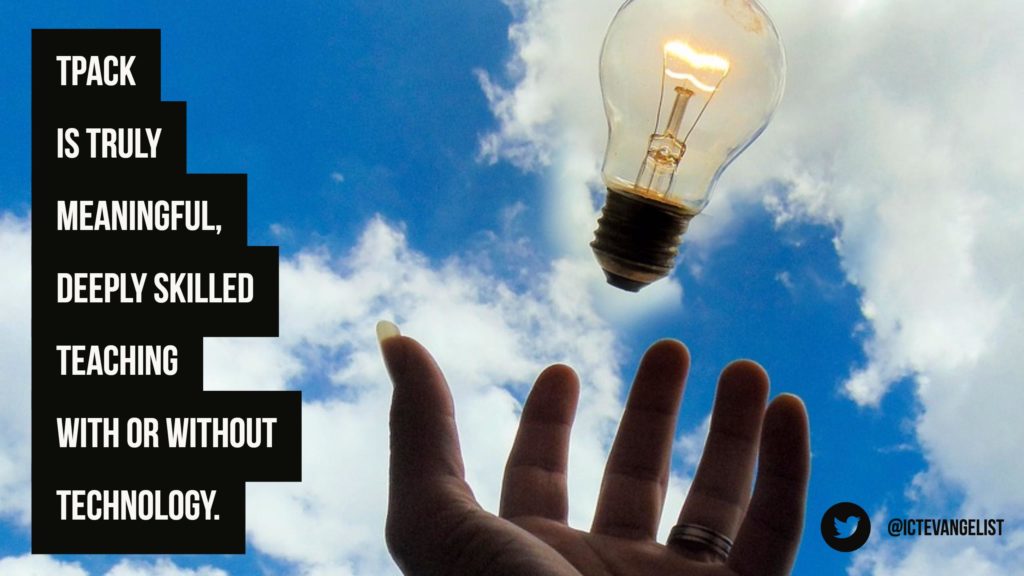
Training
Training is a key area where the problem lies and one which takes up a significant amount of my time and work these days. One key aspect of technology in the TPACK model is that educators are asked to think critically about their use of technology. Koehler and Mishra say clearly that TPACK is “truly meaningful, deeply skilled teaching with or without technology”. The key is to be able to make informed choices about use of technology. Sometimes it is right to not use technology. Sometimes though it can be and can have an impact on reducing workload, improving learning outcomes, supporting efficiency in the classroom, improved access to information, opportunities for interleaving, low stake testing and much much more. Without training though, how can educators make these informed choices?
So with this in mind, to help teachers in their thinking about where they might start with technology I created a little sketchnote with some guidelines to assist when thinking about using new technologies in the classroom. After all, it is about teaching and learning with (or without) technology and if we can accept that we need to undertake some learning ourselves, we can improve outcomes for ourselves and our pupils. Every day is a learning day regardless of our age.
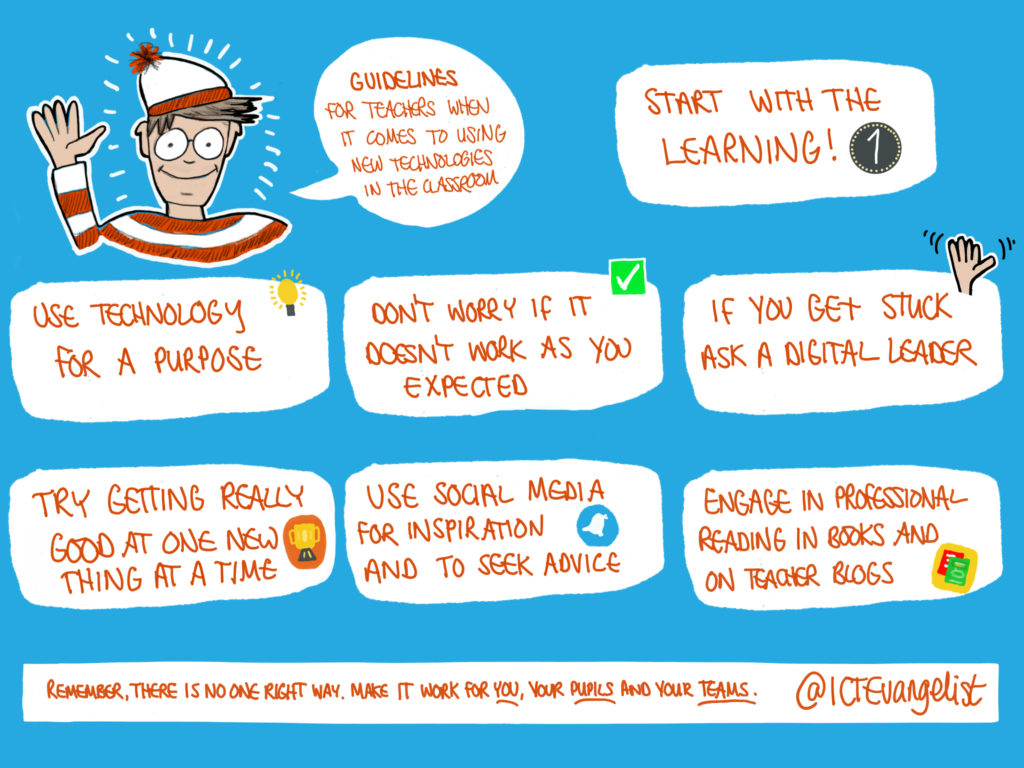
Thanks for taking the time to read this post. If you like my thinking and approach to teaching and learning and would like some help, please get in touch. I’d love to work with you. As you’ll see on my ‘about‘ page, I have a strong reputation and high levels of success in helping teachers, schools and MATs develop their teaching and learning to include technology.








